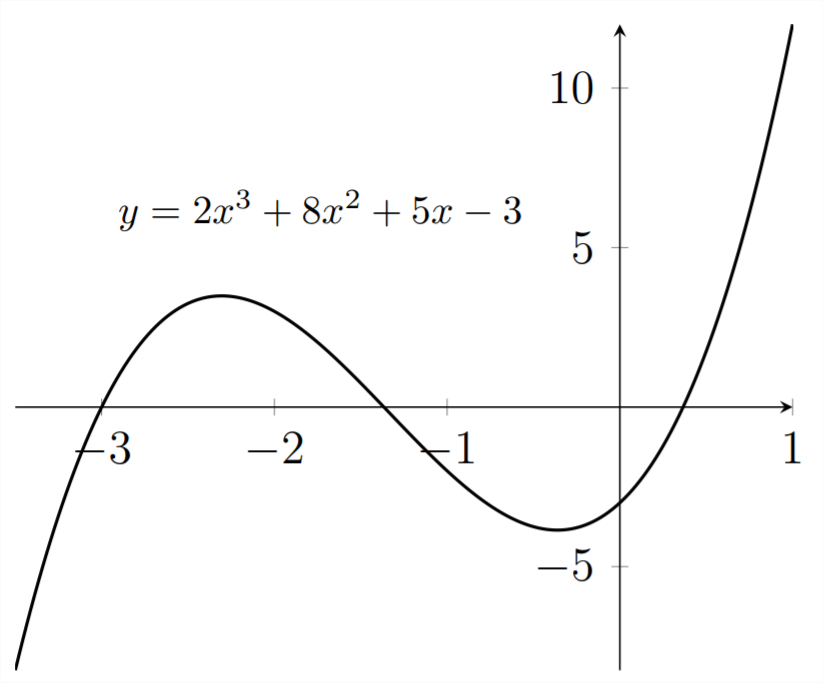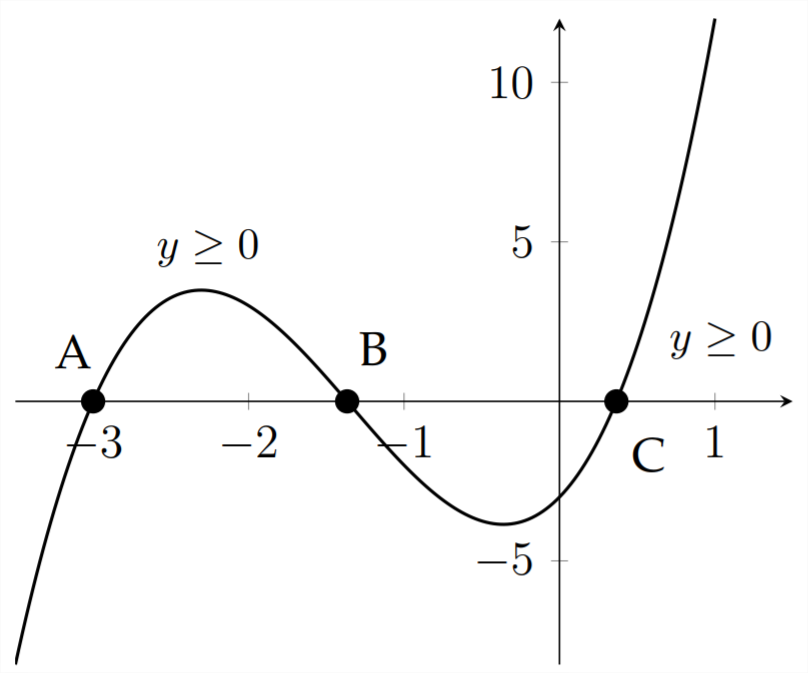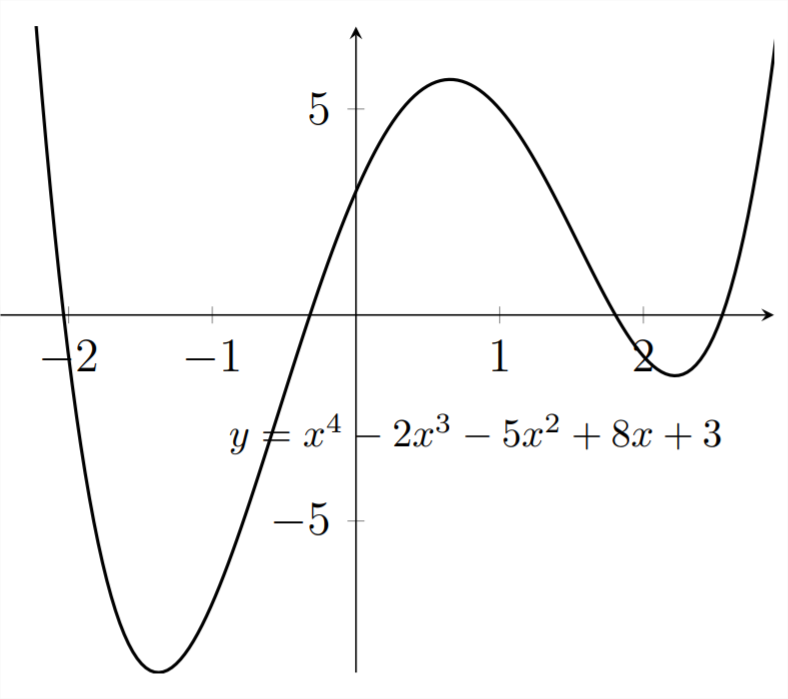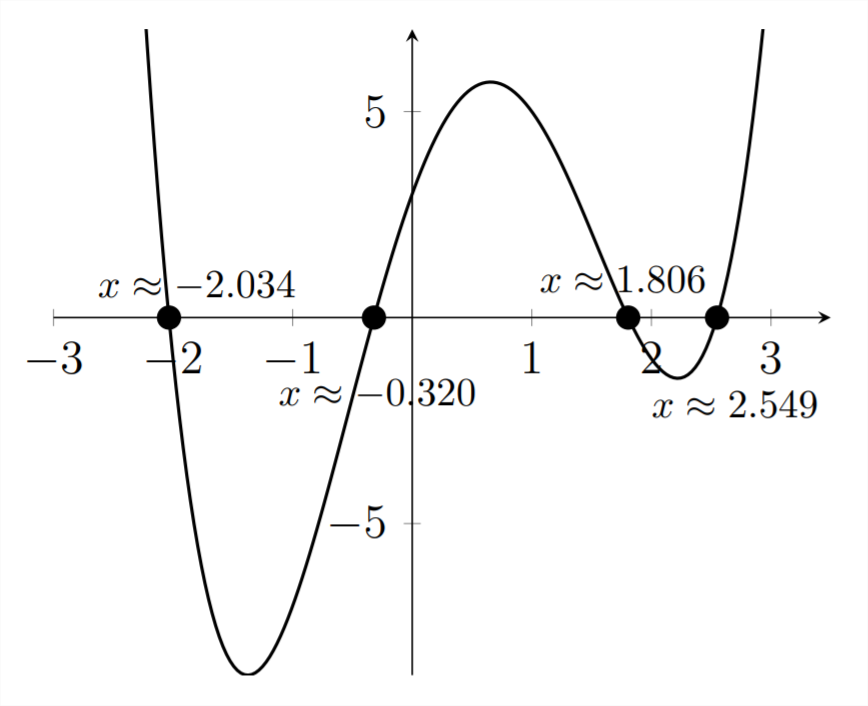2.3: Solution of Polynomial Inequalities by Graphing
( \newcommand{\kernel}{\mathrm{null}\,}\)
In this section, we will combine the concepts of the previous two sections to solve polynomial inequalities. In Section
Example
Solve the given inequality.
First, we graph the function:

Then we identify the intervals of

The indicated roots of the function
When we find the values of
complete the solution to the problem.
Example
Solve the given inequality.
First, we graph the function:

In this problem, we're looking for the intervals of

Next, we'll identify the intervals where the

So, the solution to the original inequality is:
In the next example we'll be looking to identify both the intervals where
Example
Determine the interval(s) for which
Determine the interval(s) for which
Once again, we'll start by graphing the function to find the roots:

Now that we've indentified the roots, we can determine where the
For
For
Exercises 2.3
1) Determine the interval(s) for which
Determine the interval(s) for which
2) Determine the interval(s) for which
Determine the interval(s) for which
3) Determine the interval(s) for which
Determine the interval(s) for which
4) Determine the interval(s) for which
Determine the interval(s) for which
5) Determine the interval(s) for which
Determine the interval(s) for which
6) Determine the interval(s) for which
Determine the interval(s) for which
7) Determine the interval(s) for which
Determine the interval(s) for which
8) Determine the interval(s) for which
Determine the interval(s) for which
Determine the interval(s) that satisfy each inequality.
9)
10)
11)
12)
13)
14)
15)
16)
17)
18)


